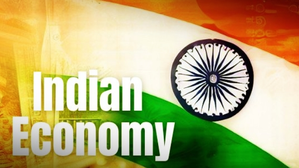New Delhi: The Finance Ministry on Monday said that the Central government’s expenditure on social services has registered a Compound Annual Growth Rate (CAGR) of 5.9 per cent between the fiscal years 2014 and 2023.
The capital expenditure on social services has seen an even more robust growth, with an 8.1 per cent CAGR over the same period, indicating the creation of societal assets.
Notably, programmes aimed at ensuring universal access to basic amenities, including Ujjwala Yojana, PM-Jan Aarogya Yojana, PM-Jal Jeevan Mission, and PM-AWAS Yojana, have gained prominence.
The ‘Indian Economy: A Review’, by the Department of Economic Affairs under the Finance Ministry, also stated that the evolution of this new welfare approach has culminated in a large-scale improvement in the quality of life in the country.
With India becoming the fifth largest economy, the lives of the common person look remarkably better than a decade ago, says the report.
A NITI Aayog report highlights that 13.5 crore Indians came out of multi-dimensional poverty between 2015-16 and 2019-21, driven primarily by rural India and the most backward areas, aligning with the principle of “Antyodaya”.
According to the National Family Health Survey data for 2019-21, there is a consistent rise in access to electricity, drinking water, sanitation, clean fuel, etc.
National health accounts data also demonstrates a consistent decline in out-of-pocket health expenditure, from 62.6 per cent of total health expenditure (THE) in FY15 to 47.1 per cent of THE in FY20.
The ministry said that several key improvements have been recorded, including a decline in the maternal mortality ratio, a rise in female Gross Enrollment Ratio (GER) in higher education surpassing the male GER since FY18, and 16 per cent reduction in TB incidence between 2015 and 2022.
“The bouquet of fiscal transfers through welfare schemes has played a pivotal role in reducing economic inequality, as highlighted in a recent collection of essays by the Office of Chief Economic Advisor (CEA).
Over the last decade, the broad scope of “empowering welfare” has expanded significantly, said the Finance Ministry.
According to the ministry, the Ayushman Bharat initiative has made significant strides, with 30.3 crore Ayushman Bharat cards issued and 6.2 crore hospital admissions recorded as of January 17, 2024.
The transformation of primary healthcare facilities into Ayushman Arogya Mandirs has reached over 1.6 lakh centres, while more than 17.4 crore patients have availed e-Sanjeevani OPD services.
The National Education Policy introduced in 2020 has brought about structural reforms, and achievements include the launch of the National Curriculum Framework for Foundational Stage (NCF FS), PARAKH for student assessment, and the NIPUN Bharat Mission for foundational literacy and numeracy.
“Under PM Kaushal Vikas Yojana, 1.4 crore candidates have been trained since 2015, and the recent launch of the Skill India Digital platform aims to streamline various skill initiatives. The PM Vishwakarma scheme, introduced in September 2023, provides end-to-end support to artisans and craftspeople. Government initiatives like MUDRA Yojana, PM SVANidhi, DAY-NRLM, and Stand-Up India have significantly contributed to economic inclusivity. Notably, 44.5 crore loans worth Rs 26.1 lakh crore were sanctioned under the MUDRA Yojana, with a substantial percentage benefiting women entrepreneurs.
The PM Jan Dhan Yojana has opened 51.4 crore accounts, while other financial security schemes like PM Jeevan Jyoti Yojana, PM Suraksha Beema Yojana, Atal Pension Yojana, and PM Shram Yogi Maandhan Yojana have provided a safety net for millions of Indians, the Finance Ministry said.
–IANS


Comments are closed.